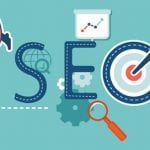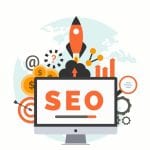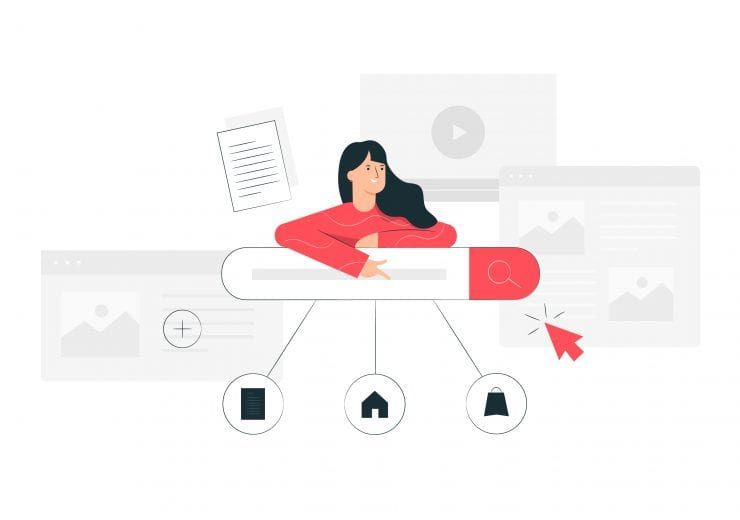Can You Distinguish SEO and SEM?

You’ve heard of SEO (search engine optimization). You’ve probably gotten sales calls from agencies trying to sell you on it. But you might not know as much about SEM.
This guide will teach you everything you need to know about SEM, including what makes it different from SEO and how you can apply SEM strategies successfully at your business.
What is SEM (Search Engine Marketing)?
SEM stands for Search Engine Marketing.
It’s exactly what it sounds like — marketing on search engines. But it’s exclusively outbound (you finding customers rather than them finding you through inbound marketing tactics like SEO).
You’re placing paid ads on a search engine results page (SERP). This is usually called a PPC, or pay-per-click, ad.
Through SEM, you’re able to bump up the visibility of your website on search engines like Google, Bing, and Yahoo through paid advertising initiatives.
And if you’ve ever searched project management software or the like, you’ve probably seen monday.com’s ads.
Google is by far the biggest search engine in the world, and thus gets the lion’s share of SEM attention.
81% of people start their search for some kind of product or service to buy on a search engine, and 94% of all those searches happen on Google.
So it’s probably fair that when you think of SEM, you’re thinking of a Google search ad.
A paid search ad uses the power of popular search platforms to spread your offer while targeting your audience (people searching for that offer) specifically.
Using SEM you can customize your budget, deciding what you want to spend and what your payment criteria will be. You can pay per 1,000 or 1 million impressions, pay per click, pay per conversion, and so on. It’s similar in many ways to social media PPC advertising, which are those sponsored ads that you’ve often seen on your Facebook, Instagram, or any other of your go-to social media platforms.
You pin down the success of your SEM campaign by gauging your click-through rate. That’s the number of people that see your ad as opposed to the number of people who actually clicked on it.
What’s the difference between SEM and SEO?
It’s not uncommon for beginner marketers to get SEM and SEO mixed up. As we mentioned before, their names are irritatingly similar.
But there are major differences at play here.
SEM is paid search advertising. You’re creating ads, targeting your audience, deciding on an ad spend, and then putting your offer out there to searchers.
SEO is the optimization of your website’s content (and the website itself) to increase the frequency that you pop up in organic traffic on a given search engine results page (SERP — yay acronyms!). You can use a tool like SEMRush to step up your SEO capabilities.
This is done through a series of content tweaks and linking initiatives both on and off your site.
The major difference between the two can be summed up in speed:
SEM gives instant results. SEO takes time.
It typically takes up to 3 to 6 months for SEO to deliver any kind of return on investment.
SEM, on the other hand, starts showing your ads to searchers seconds after being activated.
Despite their differences, these two marketing philosophies work closely together.
Do you need both SEM and SEO?
You will get the best results if you use SEM and SEO in conjunction with your regular digital marketing strategy.
While your SEO strategies are building momentum, start generating targeted traffic with an investment into SEM. This will drive visitors to your site and increase engagement and awareness.
Once you’re ranking on the first page for a few of your target keyphrases (with SEO) you can step back on heavy investment into SEM — retaining ads on only a few high-performing keywords.
SEO offers a better ROI over time (given the “evergreen” nature of the content), but SEM can’t be overlooked. An impressive 40% of all web traffic comes from organic search results while 28% comes from search ad initiatives like SEM.
SEO improvements help keep your SEM strong
How does that work?
There is a quality score assigned to each site by Google.
If people are clicking away from your site and having a bad experience, your quality score dips, and Google will then charge you more per click for your SEM ads.
SEO enhancements to a page help improve the user experience and, in turn, raise your quality score and lower your ad spend.
How can you succeed at SEM?
SEM can help you succeed in a number of ways. It helps you generate fast revenue, it increases brand awareness, it lets you specifically target your audience, and it can fit into virtually any budget.
You know why you should engage in SEM, but you don’t know how just yet.
To start off, an organization is the key to success here. You can easily track your ads using monday.com’s marketing calendar. Here you can invite your teammates to work on campaigns, determine the budget and add notes all in one place.
Once you know that you have everything organized, it’s time to really zero in on maximizing your marketing campaign.
1, Focus on customer intent
The first thing you have to determine is customer intent. Why are customers searching for your terms?
Once you know that, you can make your Google ad directly appeal to their wants and needs.
You’re going to need to go through a lot of demographic information for that to work.
That means constantly reviewing your active, won, and lost leads to look for similarities and differences.
There’s a lot that you can learn from past success, failure, and current opportunities alike.
There are three major search intent categories that most people fall into. They are typically performing searches for:
- Entertainment
- Research
- Products
By knowing which category makes up the bulk of searches for the terms you want to include in your SEM plan, you can determine if their intent coincides with your link. For example, if you choose a term that most people are typing in for entertainment or research, it’s not going to do much for you when you’re trying to sell products.
Make sure that you’re reviewing your leads in monday.com’s Lead Management template to stay on top of demographic trends, including how your audience’s problems and intent are shifting over time.
2, Stick to your budget
Determine what you can afford to spend on SEM and stick with it.
You also need to know what you have to spend in order to be competitive.
That means you need to budget for more than just ad spend.
It takes company time to perform research. Then someone has to write out the copy for your ads. And someone needs to create the media you’re going to include. Finally, someone has to create the landing page. All of this adds up to money out of pocket.
monday.com’s Budget Tracker template works very well when tracking your ongoing expenses and making sure that you remain comfortably in budget.
3, Optimize your keywords
Before you run your first ad you’re going to have to determine which keywords to pursue. That means performing a ton of keyword research to determine the most relevant and highly searched terms for your industry.
Search marketing platforms like Google Ads give you the option of creating ad groups for various terms that go together. This feature is especially helpful if you’re working with a number of different audiences or trying to appeal to different issues plaguing the same audience.
It’s also a perfect opportunity for A/B testing. That is when you run two campaigns with the same goal simultaneously to determine which is working better.
Figure out how your keywords line up with the ad copy and find ways to naturally weave those terms into your content.
Do not just stuff keywords in there haphazardly. One of the factors in determining when and where your content shows is the actual quality of the ad itself. So make sure that it’s legible. Don’t sacrifice quality for one more keyword.
You also need to utilize negative keywords to make sure you’re limiting waste. Negative keywords are disqualifying terms.
If you’re trying to sell cars in a specific area, you might choose “Rent” or “Rental” as negative keywords. Someone looking to rent a car might see your ad on a search result and click on it. They have no potential for conversion, but you were charged for that click.
You can only stay on top of these factors if you’re organized. That’s why you need to keep track of how you’re creating your ad content and what keywords (and negative keywords) you’re using with the monday.com Content Planning template.
Conclusion
Whether you’re calling it PPC or SEM, this is an important piece of modern digital marketing. It should never be lumped together or confused with SEO, as they are two completely different marketing functions that happen to have similar-sounding names.
Your ability to succeed with an SEM strategy will be reliant on your ability to track your various ads and plan your ad copy and content in advance. For that, we highly recommend monday.com’s Content Planning and Marketing Calendar templates.





